Artworks by George W Bell
paintings, drawings, and more..
Paintings / set one / set two /
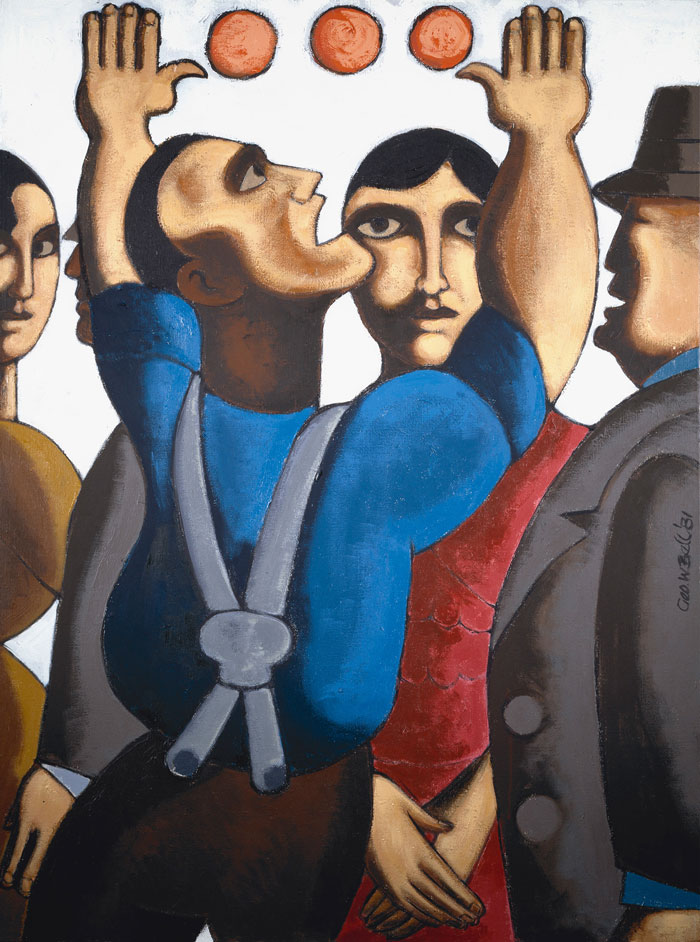
|
|
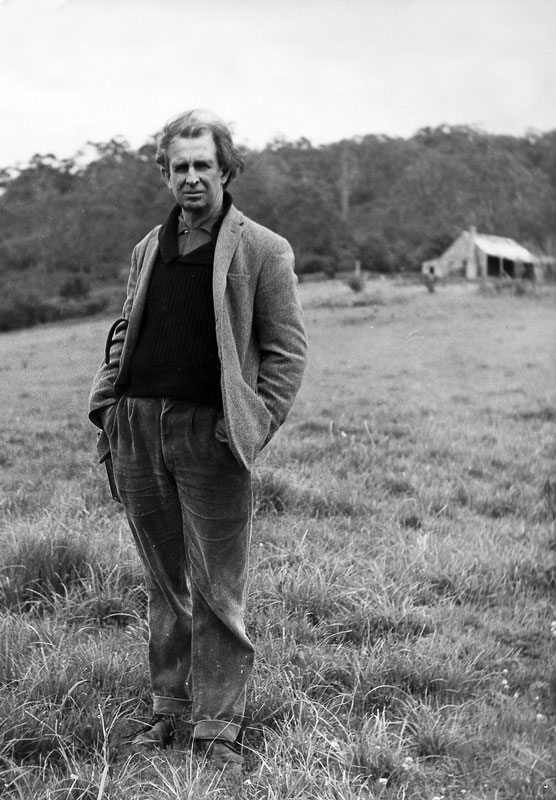
|
| Juggler in the Street 1981 |
|
|
Buskers and musicians in the street were a strong element of Melbourne life during the depression.
Gertie ( George's mother ) was a playful woman and once donated a coin into a tuba instead of the proffered cap.
|
|
|
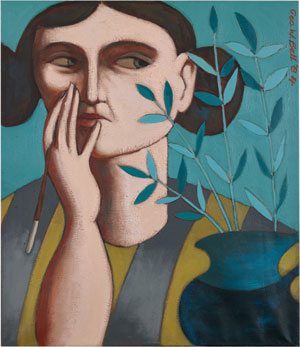 |
| Homage to Winifred Waddell 1984 |
Winifred Waddell popularised the use of native plants with her articles in the ‘Junior Age’ under the title ‘Bushland Notes’.
She was a mathematics teacher at Merton Hall from 1916 until her retirement in 1941. As a pioneer conservationist she founded the Native Plants Preservation Society and devoted considerable amounts of time to public education about native flora.
She established wildflower sanctuaries all over the state and wrote regularly. Along with the more famous Edna Walling, Winifred Waddell believed in conserving indigenous vegetation on the road-sides’, cemeteries and railway verges. This idea failed because roads are widened rail and cemetery verges are cleared by local councils.
references: Gordon Ford and Gwen Ford, Gordon Ford: The Natural Australian Garden (Melbourne: Bloomings Books, 1999), p. 38.
Winifred Waddell, Wildflower Diary, ed. Jean Galbraith (Maryborough: Native Plants Preservation Society of Victoria, 1976).
Gordon Ford and Gwen Ford, Gordon Ford: The Natural Australian Garden (Melbourne: Bloomings Books, 1999), p. 18.
|
| |
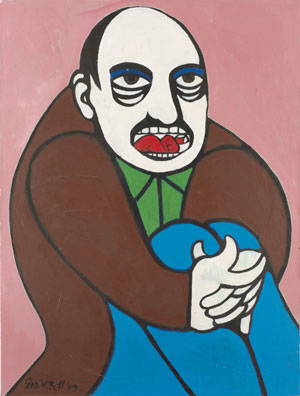 |
| Louis Brunel 1979 |
Luis Bunuel ( 1900-1983) is known as the father of cinematic surrealism.
Bunuel liked practical jokes. One evening in a Mexico City restaurant with his friend Alcoriza they saw a beautiful woman who shot passionate glances towards Alcoriza. He apologised profusely to Bunuel, but left with the unknown woman. Bunuel appeared very angry and he rejected the excuses for leaving him. Later in the hotel room Alcoriza saw these words written on the woman’s belly “ Happy night - Luis Bunuel”. The woman was a high- class prostitute engaged by the director.
References: Luis Bunuel, Luis Bunuel: Three Screen Plays (New York: The Orion Press, 1969).
Bryan M. Papciak, "Thank God I'm an Atheist" the Surreal Cinema of Luis Bunuel ([cited 22nd September 2001]); available from this site.
|
| |
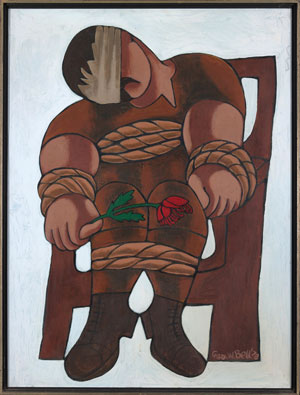 |
| Executed Breaker Morant 1978 |
A great many drawings and paintings were about the execution of Breaker Morant and Handcock during the Boer War.
The Breaker Morant story captured the imagination of Australians because it was widely believed that the British Government made a sacrifice of Australians for political expediency. Opposed to any type of execution George worked with images of their vulnerability.
Poem by Harry Morant. (written while imprisoned)
‘It really ain’t the time nor place /
To reel off rhyming diction
But yet we’ll write a final rhyme
While waiting crucifixion’
references: Breaker Morant was not known as a brutal man and the transcripts of the court martial have not been found. It is assumed that the Public Record Office destroyed them.
Kit Denton, Closed File: The True Story Behind the Execution of Breaker Morant and Peter Handcock (London: Rigby, 1983)
|
| |
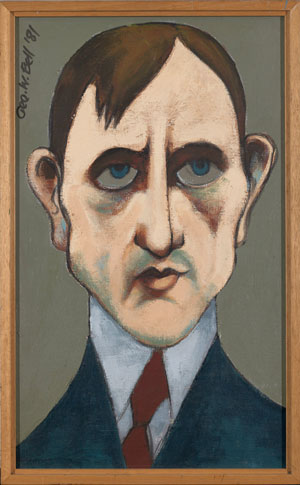 |
| Obsessive Behaviour 1981 |
This is a painting inspired by a news article about a man with obsessive behaviour, later GWB changed the title to “Contemporary Head.” George comments about his images “ We are attuned to types, but it is only when we see exceptions that we consciously know the differences of an individual.”
|
| |
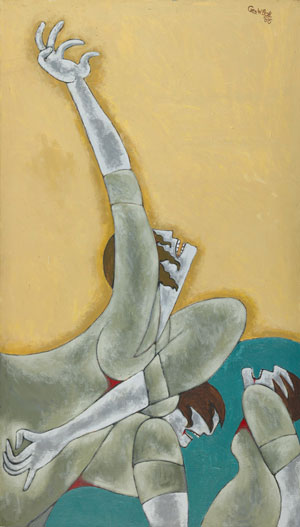 |
Prisoners of War
‘Radji Beach, Banka Island ' 1986 |
When the Japanese Army invaded Singapore in 1942 sixty five Australian nurses were put upon an old ship the ‘Vyner Brooke’ to escape. However a bomb was dropped down the ships funnel and it sank 15 miles from shore. Twenty-one nurses came ashore on Radji Beach, Banka Island, with 20 British soldiers.
The locals would not protect them so the senior British officer left the group to report and surrender to the Japanese. On Monday 16th Feburary 1942 a Japanese officer and 15 soldiers returned, Vivien Bullwinkle wrote ‘They ordered the men up and marched them off at rifle and bayonet point around the cove. They came back and we knew what had happened. We’d heard no shots, but they came back wiping their bayonets……We were all sitting down, and we were ordered up, and told to march into the sea: Which we did. As we got to about waist level they started machine gunning from behind. I was hit just at the side of my back. The bullet came through, but I wasn’t aware at the time….’
Betty Jeffrey ( a survivor) wrote in answer to George’s enquires about the nurses uniforms which he would include in a painting. “ On the beach before being killed, no veils and possibly no shoes on. We were all dressed in our indoor uniforms as we were taken from our wards to the ship ‘Vyner Brooke’ therefore no colour patches as they were only on our outdoor uniform suits.”
references: Vivien Bullwinkle, cited in Hank Nelson, Prisoners of War: Australians under Nippon (Queensland: Australian Broadcasting Corporation, 1985), p. 7
Betty Jeffrey, Letter, 20 September 1985.
Betty Jeffrey, White Coolies (Sydney: Angus & Robertson, 1954), p. 163.
Betty Jeffrey, White Coolies (Sydney: Angus & Robertson, 1954), p. 180.
|
| |
 |
| Slaying the Apprentice 1978 |
Gordon Bell studied sculpture at RMIT, to supplement his income he worked as a builder. One of his compatriots Anne a young woman also did an apprenticeship in building and she encountered continual sexual harassment, this behaviour was most intense while on a building site at the zoo.
|
Paintings / set one / set two /
use the menu above and below to explore so much more on George W Bell
|